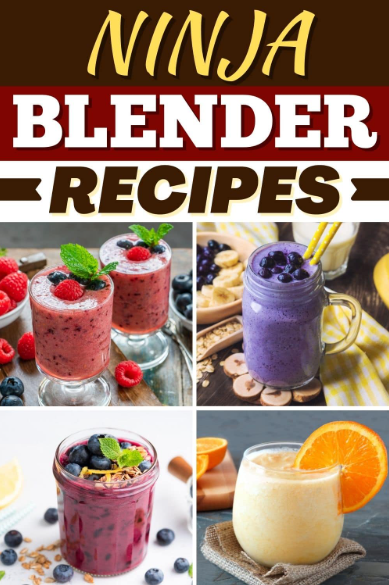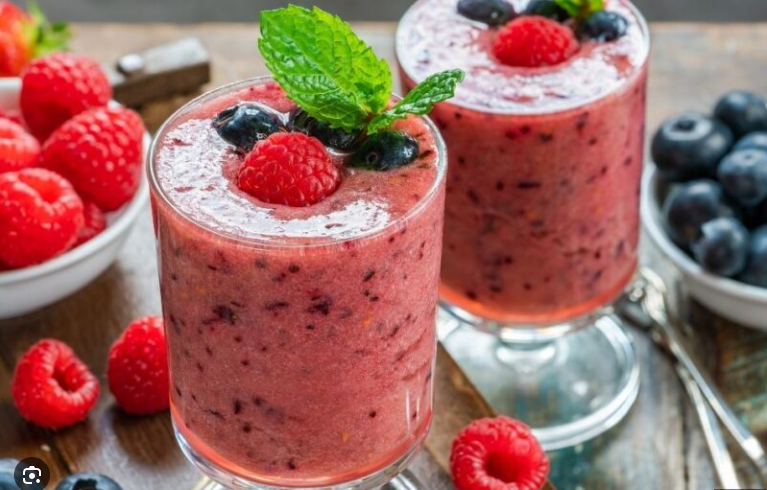When it comes to preparing blender recipes for dinner, many home cooks wonder if a blender can truly replace a food processor. Both appliances are kitchen powerhouses, but they serve slightly different purposes. With the right blender setup and techniques, however, a blender can handle many tasks typically reserved for a food processor, making it a versatile tool for creating delicious dinners. In this comprehensive guide, we’ll explore whether a blender can replace a food processor, dive into practical blender recipes for dinner, and share tips on blender maintenance, blender troubleshooting, and blender safety to ensure optimal performance. Let’s blend our way to the answers!
Blender vs. Food Processor: Understanding the Differences
Before diving into whether a blender can replace a food processor, it’s important to understand their core differences. A blender, whether a high-powered model or a portable blender, is designed for liquid-based tasks like smoothies, soups, and sauces. Its sharp blades and narrow jar create a vortex that pulls ingredients toward the blades for smooth blending. A food processor, on the other hand, excels at chopping, slicing, grating, and mixing denser foods like doughs or coarse textures.
While food processors are more versatile for certain tasks, many blender recipes for dinner can mimic food processor results with the right techniques. For more insights on choosing the right appliance, check out the best blender guide to find a model suited to your needs.
Can a Blender Handle Food Processor Tasks?
The short answer is: yes, in many cases, a blender can replace a food processor, especially for blender recipes for dinner. However, its effectiveness depends on the task, the blender’s power, and how you use it. Let’s break down common food processor tasks and how a blender can tackle them:
- Chopping vegetables: A blender with a pulse function can chop onions, carrots, or peppers for salsas or soups. Use short bursts to avoid over-processing.
- Making dips and spreads: Blenders excel at creating smooth dips like hummus or pesto, which are perfect for dinner appetizers.
- Pureeing: Blenders are ideal for pureeing cooked vegetables or fruits into sauces or soups, often outperforming food processors for silky textures.
- Grinding nuts or seeds: High-powered blenders can make nut butters or grind spices, though you may need to blend in small batches.
- Kneading dough: This is where blenders fall short. Food processors are better for heavy doughs, as blenders lack the capacity and blade design for this task.
- Slicing or shredding: Blenders can’t replicate the slicing or shredding discs of a food processor, so tasks like shredding cheese or slicing cucumbers are better left to a food processor.
For most blender recipes for dinner, such as soups, sauces, or dips, a blender is more than capable of stepping in. However, for tasks requiring precise slicing or heavy dough mixing, a food processor remains superior.
Blender Setup for Food Processor Tasks
To use your blender as a food processor substitute, proper blender setup is crucial. Here’s how to prepare your blender for versatile dinner prep:
- Choose the right jar: Use a wide-based blender jar for better ingredient circulation, especially for chopping or grinding.
- Use pulse mode: The pulse function mimics a food processor’s chopping action, giving you control over texture.
- Add liquid sparingly: For tasks like pureeing, a small amount of liquid helps the blades move smoothly.
- Check blade sharpness: Dull blades reduce efficiency, so inspect them regularly as part of blender maintenance.
For detailed advice on how to connect blender components correctly, visit blenderreviewz.com for expert tips.
Blender Recipes for Dinner to Replace Food Processor Tasks
Here are five blender recipes for dinner that showcase how a blender can handle food processor tasks, from pureeing to chopping. These recipes are quick, flavorful, and perfect for weeknight meals.
1. Velvety Butternut Squash Soup
This creamy soup rivals any food processor-made version, with a blender delivering a smoother texture.
- Ingredients:
- 1 medium butternut squash, peeled and cubed
- 1 small onion, chopped
- 2 cloves garlic
- 2 cups vegetable broth
- ½ cup coconut milk
- 1 tsp nutmeg
- 1 tbsp olive oil
- Salt and pepper to taste
- Instructions:
- Roast squash, onion, and garlic with olive oil at 400°F for 25 minutes.
- Transfer to the blender with broth, coconut milk, and nutmeg. Blend until smooth.
- Heat in a pot for 5 minutes, season, and serve with a sprinkle of pepper.
Blender Tip: Blend in batches if your blender jar is small to avoid overloading and ensure a smooth consistency.

2. Chunky Fresh Salsa
A blender’s pulse function makes quick work of chopping ingredients for a vibrant salsa, a task typically done by a food processor.
- Ingredients:
- 4 ripe tomatoes, quartered
- ½ red onion
- 1 jalapeño, seeded
- ¼ cup fresh cilantro
- 1 tbsp lime juice
- Salt to taste
- Instructions:
- Add all ingredients to the blender.
- Pulse 3–5 times until desired chunkiness is achieved.
- Transfer to a bowl and serve with tortilla chips or as a topping for tacos.
Blender Tip: Avoid over-pulsing to maintain a chunky texture rather than a smoothie-like consistency.
3. Creamy Cashew Pesto
This blender-made pesto is perfect for pasta or as a spread, proving blenders can handle nut-based recipes as well as food processors.
- Ingredients:
- 2 cups fresh basil leaves
- ½ cup cashews, soaked for 2 hours
- ¼ cup Parmesan cheese (or nutritional yeast for vegan)
- 2 cloves garlic
- ½ cup olive oil
- 1 tbsp lemon juice
- Salt to taste
- Instructions:
- Add basil, cashews, garlic, Parmesan, and lemon juice to the blender.
- Blend on low, slowly adding olive oil until smooth.
- Toss with cooked pasta or use as a dip.
Blender Tip: Soaking nuts softens them, making blending easier and extending blender motor life.
4. Cauliflower Mash
This low-carb alternative to mashed potatoes is easily made in a blender, delivering a creamy texture without a food processor.
- Ingredients:
- 1 head cauliflower, steamed
- ¼ cup heavy cream (or almond milk)
- 2 tbsp butter (or vegan alternative)
- 1 clove garlic
- Salt and pepper to taste
- Instructions:
- Steam cauliflower until tender, about 10 minutes.
- Add cauliflower, cream, butter, and garlic to the blender. Blend until smooth.
- Season and serve as a side dish.
Blender Tip: Use the tamper to push ingredients toward the blades for even blending.

5. Almond Butter
Blenders can grind nuts into creamy spreads, a task food processors are known for, with patience and the right settings.
- Ingredients:
- 2 cups roasted almonds
- 1 tbsp neutral oil (optional)
- Pinch of salt
- Instructions:
- Add almonds and salt to the blender.
- Blend on high, stopping to scrape down sides every 30 seconds. Add oil if needed.
- Blend for 5–7 minutes until smooth and creamy.
- Store in an airtight container and use as a spread or dip.
Blender Tip: High-powered blenders work best for nut butters. Avoid overheating by blending in short bursts.
Blender Troubleshooting for Food Processor Tasks
When using a blender for food processor tasks, you may encounter challenges. Here are blender troubleshooting tips to keep your dinner prep smooth:
- Uneven chopping: Use the pulse function and avoid adding too many ingredients at once.
- Overheating during nut butter: Let the blender rest every minute to protect blender motor life.
- Stuck ingredients: Add a small amount of liquid or use a tamper to move food toward the blades.
- Leaks during blending: Ensure the jar is securely fastened and not overfilled.
For more blender troubleshooting solutions, check out the expert advice at blenderreviewz.com.
Blender Maintenance for Optimal Performance
To ensure your blender can handle food processor tasks and blender recipes for dinner, regular blender maintenance is essential:
- Clean after each use: Rinse the jar and blades with warm water and dish soap to prevent residue buildup.
- Check seals and blades: Inspect for wear or cracks to maintain performance and blender safety.
- Avoid overloading: Overfilling strains the motor, especially for dense tasks like nut butters.
- Store properly: Keep the blender in a dry, cool place to protect its components.
Blender Safety Tips for Heavy-Duty Tasks
Using a blender for food processor tasks requires extra caution. Follow these blender safety tips:
- Don’t overfill: Stay below the max fill line to prevent spills or motor strain.
- Use pulse for control: Short bursts prevent overheating and ensure even results.
- Unplug when cleaning: Never clean the blades while the blender is plugged in.
- Secure the lid: Always lock the lid to avoid splattering, especially with hot ingredients.
When a Food Processor Is Still Necessary
While a blender can handle many blender recipes for dinner and food processor tasks, there are limitations. For tasks like slicing vegetables, shredding cheese, or kneading heavy doughs, a food processor’s specialized attachments are unmatched. If you frequently prepare recipes requiring these functions, investing in both appliances may be worthwhile. For guidance on choosing a blender that maximizes versatility, explore the blender guide for top recommendations.
Conclusion: Can a Blender Replace a Food Processor?
For many blender recipes for dinner, a blender can effectively replace a food processor, especially for pureeing, chopping, and making dips or spreads. With proper blender setup, blender maintenance, and blender safety practices, you can create a wide range of dishes, from creamy soups to chunky salsas. However, for tasks like slicing, shredding, or dough kneading, a food processor remains the better choice. By mastering blender tips and troubleshooting techniques, you can maximize your blender’s potential and enjoy delicious, hassle-free dinners. For more blending tips and appliance recommendations, visit blenderreviewz.com to find the perfect tool for your kitchen!